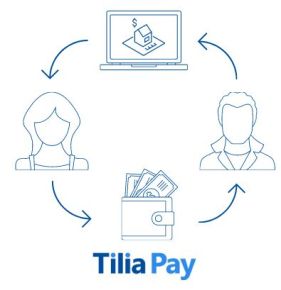 Friday, September 3rd saw an article by VentureBeat’s Dean Takahashi – no stranger to Linden Lab, Second Life and LL – doing the rounds, entitled Will the metaverse bring the second coming of Second Life? While I personally find the term “the metaverse” to be one of the must frequently over-hyped / over-used terms in recent years, Takahashi’s article makes for an interesting read on a number of levels.
Friday, September 3rd saw an article by VentureBeat’s Dean Takahashi – no stranger to Linden Lab, Second Life and LL – doing the rounds, entitled Will the metaverse bring the second coming of Second Life? While I personally find the term “the metaverse” to be one of the must frequently over-hyped / over-used terms in recent years, Takahashi’s article makes for an interesting read on a number of levels.
The first is that VentureBeat is a well-regarded tech news and events on-line magazine that includes the supplement GamesBeat that focuses on the world of computer, mobile and video games. Between them, they draw down some 6 million unique visitors a month and 12 million page views. That’s potentially a lot of exposure for articles within the publication, and Takahashi’s article was a headline piece for GamesBeat’s front page (although it has since slipped down the ranking somewhat).

The initial part of the article is something of a re-tread of Second Life’s history for those of us familiar with the platform. While the ground covered may well be familiar (and the quoted numbers possibly subject to quibbling in some quarters), this re-treading nevertheless frames SL for those not familiar with it or were unaware it is still around and doing moderately well for itself.
This part of the article also helps frame Linden Lab as an “elder statesman” (so to speak) of the user-generated content frontier, having long since tackled many of the issues and hurdles that those attempting to now define and provide “the metaverse” are just starting to tackle. All of which makes for good reading and certainly helps carry the message that in this day of Facebook, Microsoft, et al trying to foist their visions of what “the metaverse” should be, Linden Lab has the right to say, “been there, done that – and still doing it!”.
However, it’s the latter part of the article that drew my focus, with its referencing of both Tilia and recent moves on the part of the Lab to develop “partnerships” to try to “grow” SL. Both of these are also parts of the article I’ve witnessed as causing some negative gnashing of teeth in some circles, which has also framed my thinking in writing this piece.
In particular, Takahashi’s revelation that Tilia has cost Linden Lab $30 million has raised eyebrows and some grumblings about what this might mean for Second Life’s future.

This needs a little context. While LL has spent what seems like a huge amount of money on Tilia, as Takahashi notes, it has been over a 7-year period, starting not long after Ebbe Altberg joined Linden Lab as CEO, and the initial expenditure was required; as Takahashi goes on to point out, for a company like LL to be able to make pay-outs to users (and generally handle fiat money on behalf of its users) it must comply with a range of US federal, state, and international regulations.
In terms of US requirements, this has meant LL had to become a licensed money transmitter at both the federal and state levels – a move more easily achieved by ring-fencing the services that handle all payment processing / transfer into an entity of their own. Had it not do so, then LL would have hit a wall in its ability to make pay-outs. Beyond this, Tilia Pay’s regulated services benefit Second Life in a number of other ways (allowing the use of credit / debit cards within services such as the Marketplace through to assisting with overall user account management and security, for example).
Obviously given a large amount has been sunk into Tilia, it is natural for the Lab’s new owners to want to leverage this expenditure. But this doesn’t mean Tilia and Second Life are, or will become, an “either / or” proposition for the Lab’s future direction.
Rather if Tilia can be made a success, it would mean that Linden Lab – after more than a decade of trying – has gained a second revenue stream it can utilise to help it remain viable moving into the future. Further, it’s long been the philosophy at LL that as long as SL has users enough to ensure it remains a healthy generator of revenue / income, there is little reason to shut it down / sell it, and I’d question this philosophy being radically altered by the success of a second product within the company’s portfolio.
At the end of the piece, Takahashi brings in the subject of Zenescope, and LL’s focus on “partner collaborations”. This appears to be part of what has been referred to as the drive to grow the user base.
It’s not necessarily a bad idea – working with organisations that have established audiences of their own and which could leverage Second Life to add a new dimension of engagement for those audiences. However, it is one that has some significant hurdles to clear: attractions have to be built-out, events need to be organised and run at a tempo that keeps an incoming audience engaged and coming back at a reasonable cadence to make the effort worthwhile, and their must be a path to a practical return on the investment made (time, effort money), and so on; to say nothing of getting people into the experience and comfortable with the viewer UI.

There’s also the question that, even if successful in bringing an audience to Second Life, just how well such partnerships might actually convert members of the audience into engaged Second Life users – something that will be an important measure of success by the current user base, if not necessarily to LL or their partners, who will likely use other criteria to measure the success of these ventures.
In mentioning such partnerships, Takahashi’s piece open the door to broader thinking around where LL might potentially go with this idea in the wake of of the move to AWS.
For example, it’s already been hinted that at some point, LL might look to offer an “on-demand” product. Doing so could potentially be advantageous to potential partners, in they it present a way for them to offer their users experiences in Second Life at a more advantageous price that a 24/7 product that might only be used once or twice a week. Beyond this, there is the question of whether LL might consider entirely private grids for dedicated partners / clients / markets, and even white-labelling such a capability if they did so (thus essentially providing a Second Life Enterprise style of product in a manner and cost that would be far more appealing that that endeavour).
However, given these thoughts do go beyond the article, I’ll put them to one side for now, and just say that if you haven’t already done so, I do recommend giving Will the metaverse bring the second coming of Second Life? a read.